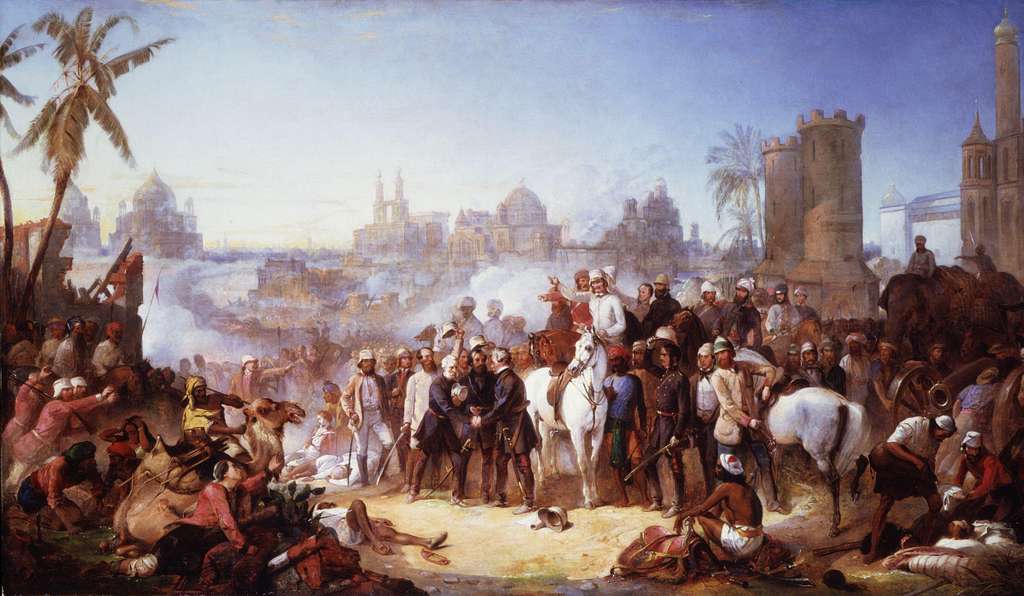Meerut’s Place in Indian History
Meerut stands as a significant chapter in the story of India’s fight for independence. Known for igniting the First War of Indian Independence in 1857, Meerut was more than just the site of a mutiny—it was the spark that set off a chain of events leading to one of the most substantial uprisings against British colonial rule. On May 10, 1857, this city became the epicenter of a fierce revolt when sepoys (Indian soldiers) rose against their British commanders. What began as a localized military rebellion in Meerut swiftly transformed into a larger national movement, fueled by long-standing grievances and a collective desire for freedom. This insurrection laid the groundwork for future resistance, embedding Meerut’s name into the annals of India’s struggle for independence.
Background: The Socio-Political Climate Pre-1857
In the years leading up to 1857, the British East India Company’s rule was marked by oppressive policies that deeply affected Indian society. Economic exploitation and high taxes impoverished farmers and traders, while traditional social structures were undermined. The company’s disregard for local customs and religious sensitivities further fueled discontent.
Among the most affected were the sepoys in the British Indian Army, who faced discrimination and poor treatment compared to their British counterparts. They were often paid less and denied the same respect and privileges. The introduction of the Enfield rifle, which required soldiers to bite cartridges rumored to be greased with cow and pig fat, was the breaking point. This act was seen as an egregious violation of religious beliefs, as cows are sacred in Hinduism, and pigs are considered impure in Islam.
The widespread economic struggles of civilians, coupled with the mistreatment of sepoys and the erosion of traditional social systems, created a volatile atmosphere. Discontent simmered beneath the surface, waiting for a catalyst to transform it into an open revolt.
The Spark of Rebellion: The Sepoy Mutiny in Meerut
The mutiny in Meerut on May 10, 1857, was triggered when sepoys who refused to use the controversial cartridges were court-martialed and sentenced to severe punishment. This act of defiance by the sepoys, coupled with the harsh retribution, incited anger among their peers. That evening, the soldiers revolted, attacking British officers, setting fire to European establishments, and freeing their comrades from imprisonment. The sudden outbreak of violence marked the beginning of what would become a widespread uprising.
Mangal Pandey, a sepoy whose earlier act of defiance at Barrackpore symbolized the brewing unrest, became an emblem of resistance. Although he was executed before the events in Meerut, his actions had already planted seeds of rebellion, inspiring the sepoys in Meerut to rise against their oppressors.
March to Delhi: The Call for Unity
Following their successful rebellion in Meerut, the sepoys marched toward Delhi, aiming to rally support and strengthen their movement. Reaching the historic city, they declared Bahadur Shah Zafar, the last Mughal emperor, as their leader. This declaration was not just symbolic but a strategic move to unite disparate factions under a common cause and evoke the legitimacy of Mughal rule, which still held cultural and emotional sway over the Indian populace.
The capture of Delhi served as a powerful statement and emboldened uprisings in other regions. Cities and towns across northern and central India rose in rebellion, inspired by the courage of the sepoys and the rallying call for freedom. The occupation of Delhi demonstrated that the mutiny in Meerut was no isolated incident but the beginning of a coordinated resistance against British colonial power.
The strategic importance of capturing Delhi lay in its historical and political significance. It was a city that had once been the heart of imperial India, and reclaiming it sent a clear message that the Indians were determined to take back their sovereignty. The mutiny marked a shift from fragmented resistance to a unified, albeit brief, movement for independence.
The Aftermath in Meerut
After the initial wave of rebellion in Meerut, the British forces, known for their military prowess, quickly mobilized to regain control of the city. The recapture of Meerut was marked by severe and harsh measures aimed at quelling any further insurrection and sending a stark message to the populace. Executions were swift and public; many sepoys and civilians suspected of supporting the mutiny were subjected to brutal punishments, including hanging and being shot by firing squads. The British employed a strategy of intimidation to suppress the spirit of resistance—public displays of retribution were meant to deter any future acts of defiance.
The impact on the local population was profound. The air of fear and subjugation that followed the British crackdown left the community demoralized and wary. Many families were torn apart as loved ones were executed or imprisoned, and economic hardship deepened as local businesses and livelihoods were disrupted. Despite these harsh measures, the spark of resistance that had ignited in Meerut would prove impossible to extinguish entirely. The bravery shown during the mutiny became a symbol of resistance, deeply etched into the collective memory of the city’s inhabitants.
Legacy of the 1857 Revolt
The immediate consequences of the 1857 revolt were significant, both for the Indian population and the British administration. One of the most impactful outcomes was the dissolution of the British East India Company. The British Crown assumed direct control over India, marking the start of the British Raj. This shift signaled a more structured and centralized approach to governance, with policies designed to prevent any future large-scale uprisings. Measures included a mix of appeasement and repression: local rulers were promised greater autonomy, while military policies were overhauled to reduce the influence of Indian soldiers in the British ranks.
While the 1857 revolt did not achieve immediate independence, its legacy had a far-reaching influence. It became the first instance of widespread, organized resistance against colonial rule and inspired later freedom movements. Leaders and revolutionaries in the early 20th century, such as Bal Gangadhar Tilak, Bhagat Singh, and Mahatma Gandhi, drew lessons and motivation from the bravery and sacrifice of the 1857 rebels. The mutiny was often cited as a pivotal turning point, showing that unified action, even under immense odds, could challenge colonial authority.
Meerut’s legacy as the spark that ignited the 1857 revolt is commemorated and remembered through monuments and educational narratives. It stands as a testament to the courage and resilience of those who fought, highlighting the city’s indelible place in the broader narrative of India’s struggle for independence.
Meerut’s Revolutionary Spirit
Meerut’s role in the 1857 revolt was more than just a historical incident; it marked the beginning of a new chapter in India’s long road to freedom. The mutiny demonstrated the willingness of Indian soldiers and civilians alike to challenge colonial rule and set a precedent for collective action. While the immediate aftermath was marked by repression, the legacy of that uprising planted the seeds of defiance that would grow into the larger freedom struggle.
The story of Meerut serves as a reminder of the courage required to rise against injustice, even in the face of formidable power. It remains a symbol of the unyielding spirit that would later fuel India’s push for independence. The echoes of 1857 continue to resonate, honoring the sacrifices made and ensuring that the revolutionary spirit of Meerut remains a cherished part of India’s historical identity.




